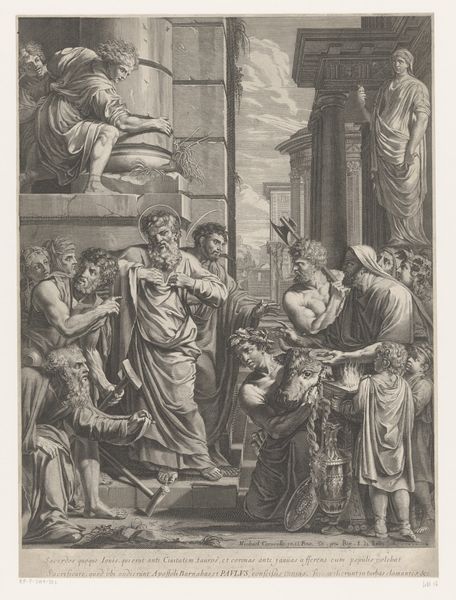
St James Baptizing Hermogenes (Scenes from the Life of St. James) 1457
0:00
0:00
andreamantegna
Destroyed
painting, fresco
#
portrait
#
painting
#
holy-places
#
perspective
#
figuration
#
form
#
fresco
#
geometric
#
group-portraits
#
line
#
history-painting
#
italian-renaissance
Copyright: Public domain
Andrea Mantegna likely painted this piece, St James Baptizing Hermogenes, using tempera on panel, sometime in the late 15th century. Though the painting is now destroyed, we can still consider Mantegna’s meticulous approach to creating the illusion of depth and classical architecture. Look closely, and you will see that Mantegna pays great attention to the details of the marble columns, the ornate capitals, and the coffered ceilings, all rendered through the skilled manipulation of paint. Consider the labor involved in preparing tempera, grinding pigments, and applying thin layers to achieve such precision. Mantegna’s embrace of classical forms reflects the values of his patron class, who would have appreciated the allusion to wealth, power, and cultural sophistication. By emphasizing the artistic skill and cultural context behind this painting, we move beyond traditional art history to consider the craftsmanship and social values embedded within.
Comments
No comments
Be the first to comment and join the conversation on the ultimate creative platform.














